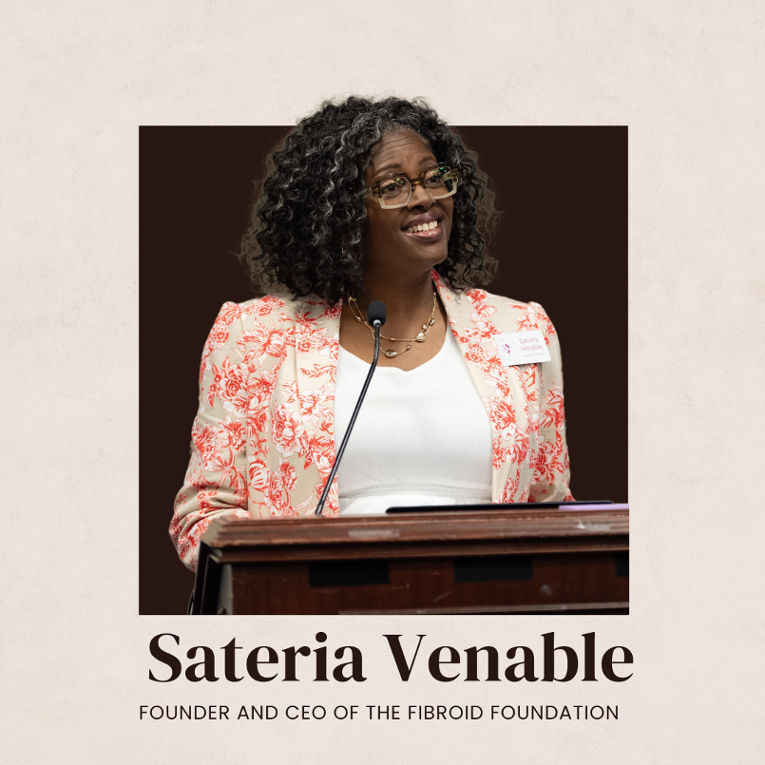CATEGORIES
Leadership and Networking | People We Admire | Women EmpowermentOverview:
- Childhood challenges shaped Sateria’s character of confidence and courage.
- Her life experience of living with fibroids inspired her to lead a movement for awareness and change.
- Sateria addresses the overlooked suffering of fibroids, advocating for women through the Fibroid Foundation.
- Sateria’s core vision is raising global awareness that a hysterectomy is not the only solution for addressing fibroids.
1. Tell us a bit about your childhood and some of the values that shaped who you are today.
I grew up in a small family in Baltimore, Maryland. My family was huge on education and I had the benefit of having a parent who sacrificed a lot to ensure I was in a good school. This had a huge impression on me because I lived in a poor neighborhood with limited means and went to school with a lot of kids from families of means. So I had to navigate two different universes every day but this drove me to aspire to have the lifestyle I saw.
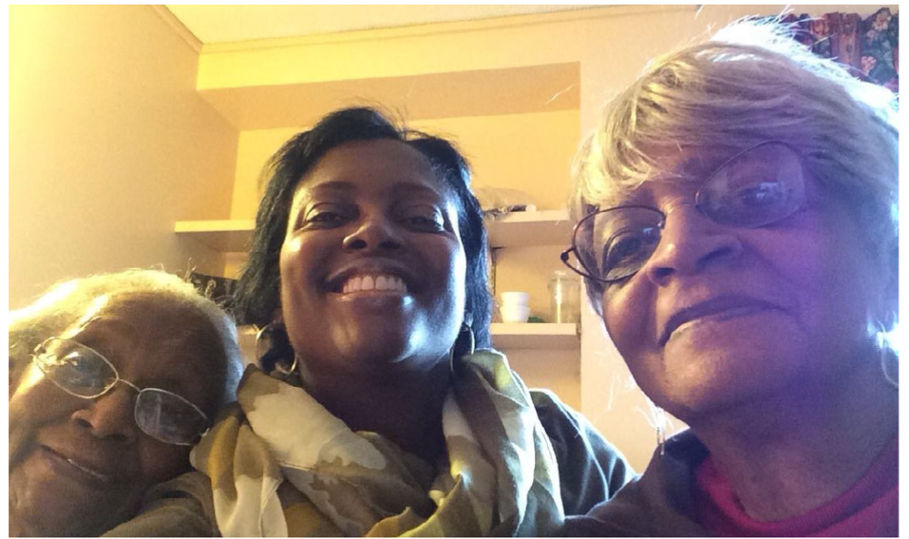
Another important aspect of my journey is that my mom got sick with double pneumonia before I was born and she didn’t have health insurance. That left a huge imprint on her and she insisted that we had the best healthcare, especially since I got sick at three years old. I was insured under her health plan as well as my dad’s health plan at his job from my childhood into college. Those were some of the key things that have translated into what I do today.
2. Share a bit about the start of your career, and how you ended up in the position you are in today.
Because I came from a family that didn’t have a lot of resources, I couldn’t visit a lot of schools. So I used to visit my aunt in New York City. I liked math as well as the buildings and architecture there, so I applied to the top 10 architectural schools and got accepted into Carnegie Mellon, the top architectural school at the time. I started my career in architecture, design, and construction management. I moved to Chicago where I worked on some large-scale commercial construction projects. Then I decided to do business development because I liked the social atmosphere, so I challenged myself to pursue it.
Despite obstacles, I ended up in a business development role that helped me develop my social skills of walking into a room, understanding people’s needs, having a conversation, and building relationships. This is reflected in every aspect of the jobs I held since then. And it’s authentic because I like talking to people and discovering how they live and move. From there, I decided I didn’t like the ground-up construction, particularly the steel-toe boots and hard hats. I’m more of a girly girl and into pretty furnishings, so I transitioned into interiors. I ended up working at the Merchandise Mart in Chicago, which is like a candy store for interior designers and architects. It has all the textiles, tiles, furniture, and paint swatches.
3. Tell us a little about the start of The Fibroid Foundation?
I have always experienced heavy menstrual bleeding, which I thought was normal because I had seen my mother go through the same, and I heard stories about how bad my grandmother’s periods were, so I pushed through. But I got so sick and couldn’t find a doctor who knew how to address fibroids. This was the impetus for me to make a difference in women’s health.
I thought, “If 70% of all women have fibroids by the age of 50, why is no one yelling from the rooftops?” I would have a different issue with heavy menstrual bleeding almost every month. My ferritin was low, so I tried to find a solution to that and blog about it. Then, I thought maybe there was something there in terms of an organization because I couldn’t be the only one experiencing this. I started talking to women about my experience and found that many women had similar experiences, and were relieved to have someone to talk to.
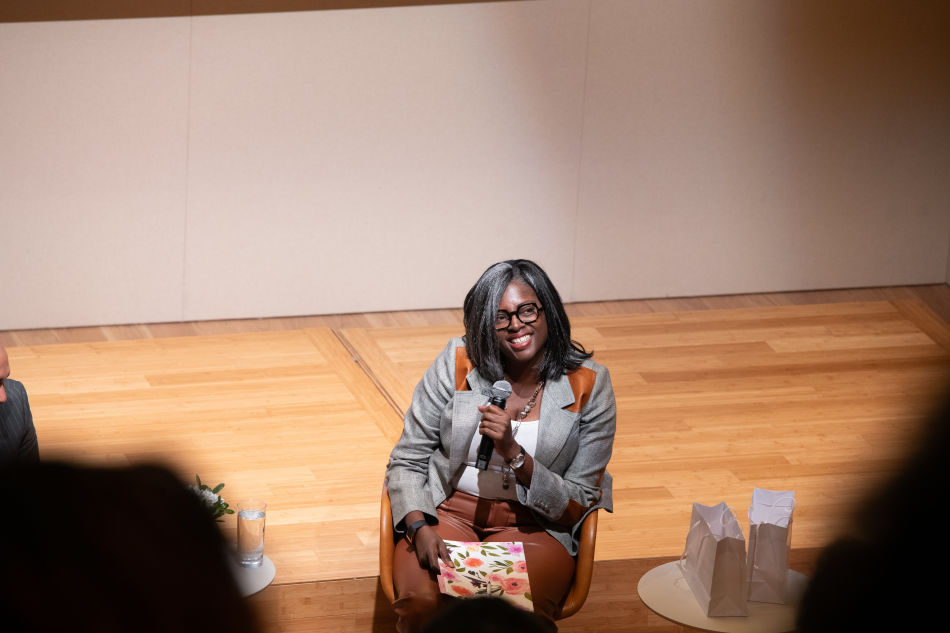
Open communication about periods is a societal responsibility. One of my goals is to make sure that women are respected and revered globally.
The idea for the Fibroid Foundation came to life when I met Dr. Elizabeth Stewart of the Mayo Clinic at a fibroid summit at Howard University in 2012. She mentioned that she had tried to start a fibroid foundation but lacked the time to fully develop the organization. She suggested I make use of the name. At the time, I had a blog about fibroids called the “Fibroid Initiative”. People told me ‘initiative’ was too hard to spell. So, I accepted Dr. Stewart’s offer, took the ‘Fibroid Foundation’ name, got licensing for it in the state, and started trying to make an impact and grow the community. Meanwhile, I was still working full-time. I didn’t stop working until another layoff in 2017. The universe kept telling me, you need to be here, not there.
4. How did you evolve from your personal health concerns to caring for the well-being of others?
What made me not just focus on resolving my symptoms is that I am a problem solver and want to make a difference in women’s rights and health globally. Historically, in many cultures, women and their bodies have been profoundly disrespected—for example, by stripping away abortion rights, an injustice that should never be condoned.
I am also driven by a harrowing personal experience during one of my surgeries that went wrong. They had to pull me out of the surgical suite because I wasn’t properly prepped, due to the inexperience of the physician. That incredibly difficult experience had a huge impact. On the second surgery, I sought out a physician and had to navigate appointment delays because I was hemorrhaging. I bled through a pack of pads almost every day for over two months until I had my surgery. Because of anemia, I had limited social activity and couldn’t travel. It was all-consuming. For this reason, I believed there had to be a better way to manage fibroids.
5. What are some of the biggest challenges you have faced in this line of work, and how have you overcome them?
The challenge I faced was not knowing my power. I think each of us has the same amount of fortitude and can be an agent of change. All of us come to that realization at different stages. My challenge was just not knowing that earlier.
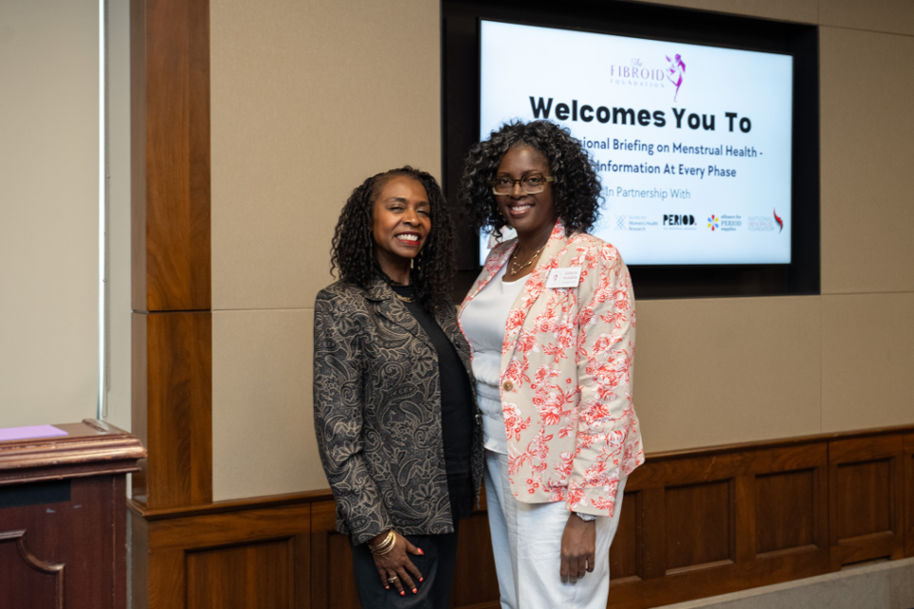
6. Supporting a community of over 26 million women globally is impressive. What strategies have been most effective in achieving this scale, and what challenges have you faced in reaching underserved communities?
26 million is the number of women in the United States impacted by fibroids. Our organization seeks to be a change agent for all women seeking menstrual care by being open to opportunities that present themselves, being authentic, and building relationships. I’ve found that doors are open to help us reach the community more broadly. I believe to be able to scale you must build an amazing team. A team that has skill sets you don’t have. Our team is incredibly organized, dedicated, and creative. We wouldn’t be here if it weren’t for them. A lot of researchers and providers, gynecologists, and fertility specialists became part of our medical advisory board, and they are some of the top fibroid surgeons in the world.
7. The Fibroid Foundation has partnered with organizations like the FDA and the Mayo Clinic. How do these collaborations contribute to the foundation’s success, and how do you identify potential partners?
The menstrual health conversation has expanded greatly in the last two decades. Periods weren’t discussed as much publicly before our organization started its work -. There were so many social media resources that weren’t active in the menstrual health space. Our experience has been that relationships naturally build, and one opportunity leads to another. With the FDA specifically, I was on an FDA committee looking at how menstrual health and fibroids are categorized and defined with electronic health records. This year, a physician who was formerly at the FDA told me that I helped them understand how they could work with patients, which surprised me.
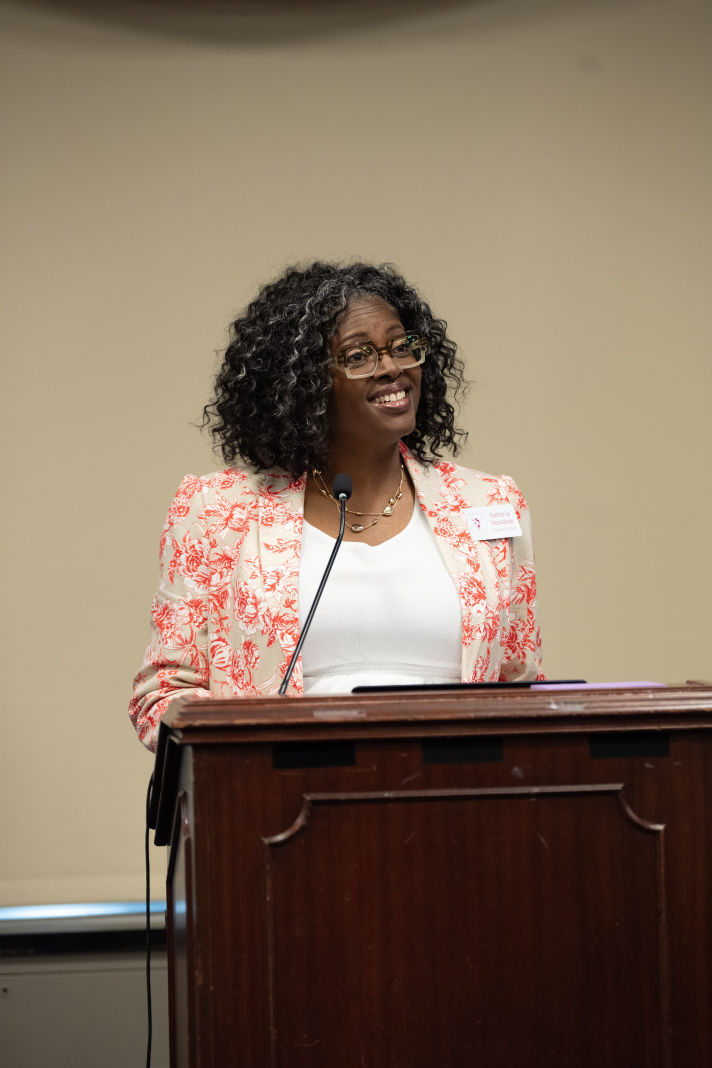
I try to build relationships not to take but to give. Relationships with your partners should be reciprocal. We seek to understand our partners’ goals and how they operate. We work closely with our partners, for example, we analyze clinical trials. If we promote a clinical trial, we’ve read the data, signed an NDA, sought to understand and track the results, and ensured that the patients are being well cared for. I believe our best practices are unique, and our partners seem to appreciate that. As a result, the relationship expands from there.
8. If you could go back and do one thing differently in your career, what would it be?
When I switched to business development to escape the ego-driven and harsh environments of commercial construction, this shift allowed me to align my career with my true interests and values. Looking back, I wish I had recognized sooner that my work was guiding me away from that path. Listening to my heart helped me find a more fulfilling direction in my professional life.
9. So much effort goes into advocacy, breaking the norms and stigmas to create a movement. What keeps you going when things don’t work a certain way?
I’m a firm believer that if there’s a problem, there’s a solution. In light of this, what kept me going was reaching out to my sisterhood, whether it’s locally or internationally, and having confidence in my knowledge. I had the blessing of meeting a woman who was a naturopath. This doctor would align my whole body to reduce my bleeding by over 50% until my spine decompressed. She helped to reaffirm that I wasn’t crazy about trying to seek alternatives to care.
I encourage women to be sure to seek reputable sources when exploring holistic care options. When it comes to women’s health, sometimes we feel like we’re being oppressed by men, but a lot of times women in the community perpetuate generational practices such as female genital mutilation. I urge women struggling with fibroids to get a community around them, such as a holistic provider, to help them. Sometimes you need a buddy to accompany you to an appointment or a family member.
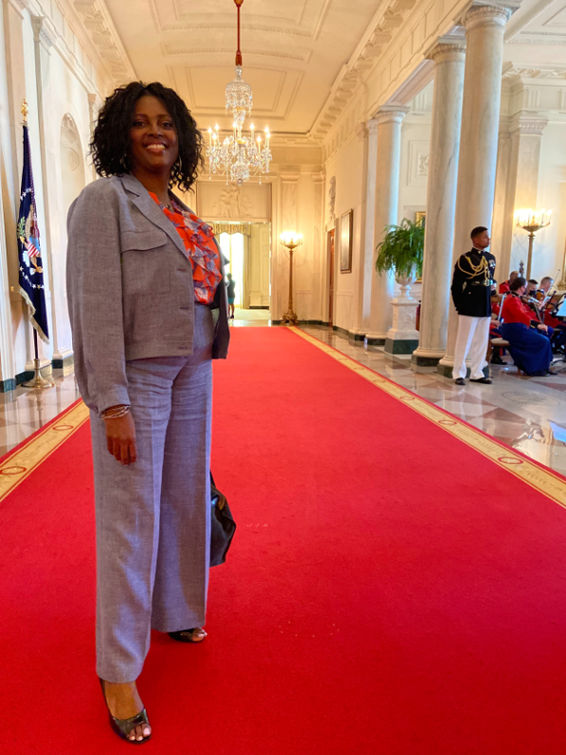
10. What is your vision for the Fibroid Foundation and how you support the community of women you empower, and what can we do to amplify your vision?
According to our last assessment, we have reached 181 countries, with a vision of reaching every country by 2040. We work in four silos: education, research, legislation, and consulting. Through education, one thing we do that has had a global impact is emphasizing that a hysterectomy is not necessary to address fibroids.
In the United States, there are 600,000 hysterectomies a year. We’re one of the worst countries for hysterectomies because the founder of gynecology in the United States, whose statue was recently taken down, is a man who did surgeries on enslaved women with no anesthesia. And so that kind of set the tone in this country for the barbaric, horrific treatment of women and the unjust disregard of their uterus. Half of those 600,000 hysterectomies a year are due to fibroids. We now know from research at the Mayo Clinic that over 80% of those hysterectomies could be resolved without the removal of the uterus. We get calls several times a week from a woman who has been told she has to have a hysterectomy for one or two fibroids. We have providers who have removed 80 or 50 fibroids and kept a woman’s uterus intact.
In the United States, fibroid surgery or minimally invasive gynecologic surgery is a fellowship. Sadly, it is not taught in medical schools. We educate women about hysterectomy repercussions such as cardiovascular issues later in life, prolapse, and urinary incontinence in some instances. So the uterus should be preserved for many reasons including protecting one’s emotional state. Providing this education to the community is empowering as it allows them to seek out the right provider to treat them.
Secondly, legislatively, there need to be laws in place and community guidelines to emphasize equality, fairness, and equity when it comes to alleviating pain. Thirdly, research-wise, we are just starting a five-year National Institutes of Health study to look at the impact of fibroids on women of color specifically. We will hold focus groups to examine the emotional toll, community and lifestyle impacts, and overall effect of fibroids on quality of life. That has never been done before. We are the co-principal investigator for the community portion, which is a rare achievement for an advocacy organization.
As I mentioned earlier, we review their clinical trials, analyze the data, and provide feedback. We assist with strategic planning, always approaching the work from the patient’s perspective. This includes ensuring that the medication and devices are patient-friendly and that the patients in the study are well cared for. We continuously gather feedback on how the medication is affecting them both in the short and long term.
Communicating all of these issues to your impressive global community will, I hope, be quite helpful.
Conclusion:
Sateria is the founder and CEO of the Fibroid Foundation, which was established to address the social stigma surrounding fibroids and give hope to women who suffer from them. Sateria grew up in Baltimore, Maryland, with the core values of education instilled in her from a very young age. Her family history and childhood greatly impacted her present-day values because she believes that no one deserves to suffer from a lack of quality healthcare. Sateria is an advocate for alternative solutions for fibroids, spreading awareness of the negative and painful effects of hysterectomies. Her fight for women’s rights to their bodies to choose the treatment they prefer for their health conditions leaves a remarkable story and impactful lessons.

